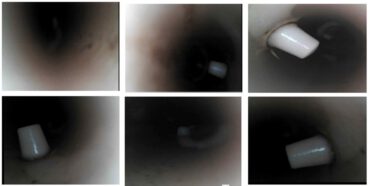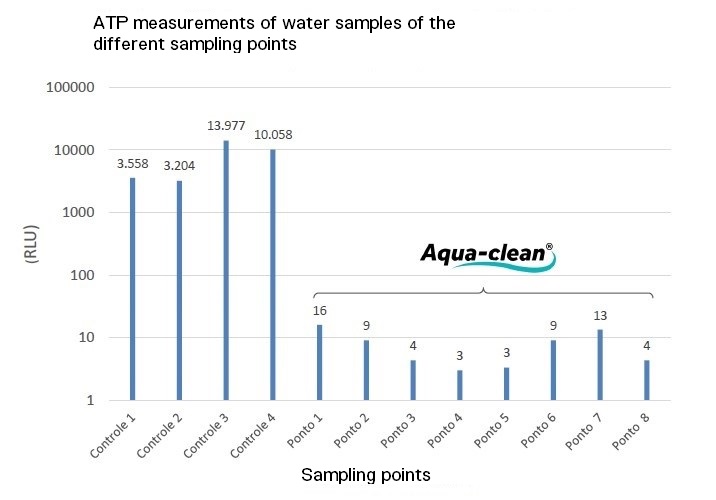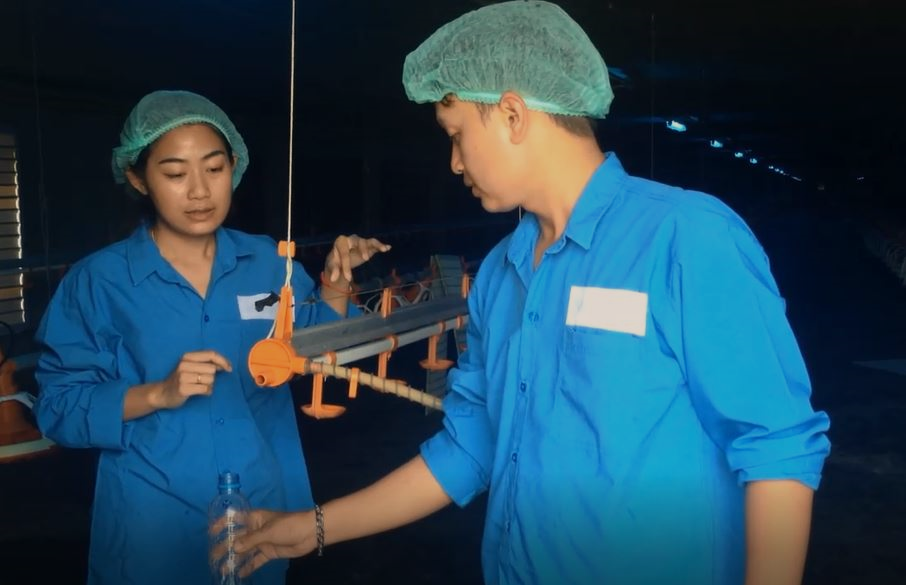New field test results show the great effectiveness of Aqua-clean on organic pollution in drinking water lines and the drinking water.
The health of animals is strongly related to the hygiene of the drinking water in the barn. Drinking water systems must be cleaned regularly and properly, otherwise pollution (biofilm) will occur, which can become a source for growth of microorganisms.
Polluted drinking water is usually not visible to the naked eye; the appearance of water does not always reflect the contamination. This can contribute to serious animal health problems and poor production results.
Especially with young animals, when the temperature is high and the water flow is low, the risk of bacterial development increases. Pollution of drinking water is caused by deposition of minerals such as iron, manganese and calcium. But medicines, additives and vaccines also leave residues in the system. Aqua-clean removes biofilm and cleans and disinfects drinking water systems.
Trial design
During a field trial at a poultry farm in Brazil, water samples were taken from 12 water lines, divided over 6 houses. 8 of these lines, divided over 4 houses, were treated with a 3% solution of Aqua-clean, while 4 water lines were not treated and served as a control. Water samples were taken before (A), during (D), and after cleaning (P). The samples and effectiveness of Aqua-clean were assessed in three ways.
Results
Visual comparison
This is what the drinking water that came out of the pipes looked like before cleaning:

The photos below show the water samples (1D – 8D) that were taken after 24 hours of exposure to Aqua-clean. All the pollution that was on the inside of the water lines has now been removed.
In pictures b), c) and d), the bucket marked with the blue arrow (→) is filled with the water that came out of the water line after all pollution and hydrogen peroxide had been removed from the water lines.

There were also photos taken of the inside of the water lines with a micro camera. This is what the inside of the pipes looked like before treatment with Aqua-clean:

And this is how they looked after treatment with Aqua-clean:

ATP measurements
The content of adenosine triphosphate (ATP) has a linear relationship with the total number of bacterial cells in the water. The results are expressed in relative light unit (RLU) of an enzymatic reaction.
Water samples with results below 20 RLU are classified as clean, samples between 20 and 60 RLU are considered acceptable, and samples above 60 RLU are considered contaminated (according to the manufacturer, HYGINE).

Discussion
Analysis of the entire dataset indicates a clear pattern in results before, during and after cleaning with Aqua-clean. There was no sudden change in pH during use of the product. This indicates a low probability of corrosion in the equipment of the drinking water system.
There was a significant increase in the turbidity of the samples collected during the treatment (D), indicating an effective means of soil removal. By conducting a physico-chemical analysis, it could be determined that the removed pollution mainly consisted of organic matter and biomass.
Also the difference in active biomass content, measured as ATP, between the treated and control water lines indicates a high efficiency of oxidizing organic material and drastically reducing microbial activity.
Conclusions
- Aqua-clean was effective in removing visually detected pollution
- The micro-camera images showed a reduction in the pollution that had adhered to the inside of the water lines and the build-up around the spouts of the nipple drinkers
- Treatment with Aqua-clean drastically reduced the content of active biomass (ATP) on the inside of the water lines
- Use of Aqua-clean did not change the pH of the circulating water significantly and remained close to 6, emphasizing that Aqua-clean has low corrosivity



